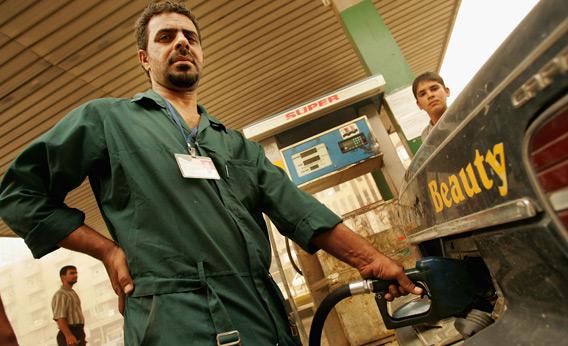The Senate unanimously passed a bill Thursday that would impose economic sanctions on Iran, over the objection of the White House. One of the administration’s complaints was that the move could increase oil prices. How much could sanctioning Iran cost us at the pump?
The nightmare scenario would be an additional $1.25 per gallon. Iran produces just over 5 percent of the world’s crude, which doesn’t seem like a lot. But oil demand is price-insensitive—people and businesses refuse to change their fuel-buying habits until the costs go way up. That means a reduction in supply will have a disproportionate effect on prices. In the past, price increases have been about 10 times greater than their precipitating drops in production. Based on the same historical data, and given that oil is currently hovering at around $100 per barrel, a complete shutdown of Iranian exports could force prices as high as $150. (That’s 5 percent, times the tenfold multiplier, times the current price of $100.) Since a one-dollar change in the cost of a barrel of oil usually translates to a two-and-a-half-cent surge in retail gas prices, cutting Iran off from world oil markets could increase the price of gasoline by a dollar and a quarter.
This theoretical scenario is extremely unlikely, however. The Senate bill permits the president to delay the sanctions if there isn’t adequate supply on the market. In addition, the bill would make it harder for foreign banks to deal with the Iranian central bank, which acts as a middle man in oil transactions. But it wouldn’t make buying Iranian crude impossible, and sanctioned countries have historically found ways to sell their oil. (Consider, for example, the oil for food program that undermined sanctions against Iraq. The Senate sanctions against Iran also have a humanitarian exemption.) There hasn’t been a truly effective, worldwide boycott of a country’s oil exports since 1951-53, when Iran nationalized its oil industry. As long as Iranian oil continues to flow to Asia and parts of Europe, the sanctions would have a relatively small impact on prices.
There’s also the possibility that Saudi Arabia could make up for some of the banned Iranian oil, as it did during the first and second Persian Gulf wars. The Saudis wouldn’t be able to plug the gap entirely, because they don’t have as much excess capacity as they used to. They could soften the blow, though.
There is one long-shot scenario that should be mentioned, in which oil prices go even higher than $150 per barrel. When pressured in the past, Iran has threatened to block oil deliveries through the Strait of Hormuz. Around 17 percent of oil traded globally passes through that waterway.
While such an occurrence could theoretically lead to $8-per-gallon gasoline, based on the historic relationship between supply and price, it’s a practical impossibility. Demand would drop significantly at those dizzying prices, causing the cost of a barrel of oil to increase more in proportion with changes to supply. More importantly, the economic shock of such a scenario would likely trigger a naval response from the U.S. and its allies.
Got a question about today’s news? Ask the Explainer.
Explainer thanks James Hamilton of UCSD and Michael Wittner of Société Générale.
